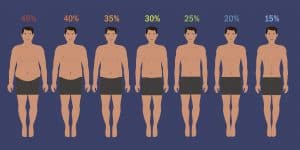When I first began on my fitness route, getting hold of reliable information was tough.
Mainly, I wanted to know how to gain strength—yet all the online resources assumed I was already well-versed in training. Furthermore, all I learned was to go to the gym and lift heavy weights—nothing else.
I knew there had to be more.
Hence, this article finally addresses the issue—consider it your ultimate strength building 101.
Who Is This "How to Gain Strength" Article For?
In short, everyone who wants to improve their strength levels.
Let me ask, do you fall into any of the following categories?
- A fitness enthusiast who has the cardio power—but lacks any real strength to hit the serious weights.
- Someone who wants increased power for daily routines such as lifting-up the kids, carrying the groceries, or doing the gardening.
- A person who wants to emulate the immense beast-like brawn of Olympic powerlifters.
- Someone who wants to gain an awesome and toned physique for that beach vacation.
If you answered yes—this how to gain strength article is for you.
Starting with the basics, it takes you through a full-strength developing program—increasing in difficulty as your power elevates.
Unlike many so-called “resources”, it explores every aspect of strength development—including training, nutrition, and scientific research.
Note, this program is for beginners to intermediate lifters. It is NOT for advanced lifters who hit a muscle gain plateau.
Let’s get started.
- Table of Contents
Understanding Strength
What’s the first image that comes to mind when you think of the strongest man or woman?
Most likely it’s a picture of a shredded, muscle-bound, oiled-up bodybuilder performing their familiar stage poses. While these guys and girls undoubtedly have strength—it’s only one particular type.
These bodybuilders, through training, have taken muscle-building to the extreme. They’re stronger than most people due to the fact their muscle fibers have grown through muscle protein synthesis. That is, the rebuilding of tissue which is damaged through lifting weights.
However, research indicates that while they can lift more than the average person—the quality of their muscle, gram-for-gram, is less than that of those who don’t push themselves to phenomenal levels.
Listen up.
What I’m trying to make clear is that strength gains don’t always mean gaining Hulk-like proportions.
Strength is inextricably linked to muscles. Gaining more power does mean muscle growth. But shirt-busting biceps are a conscious choice—and so is beach-ready tone and definition.
The first step in how to gain strength is to choose your goals.
Strength Gain Targets

Before beginning your strength program, decide what your targets are. Whether general day-to-day functional strength, impressive power that’s visible in your defined body, or the ability to knock out a massive 350-pound bench press.
The truth is, all of these goals are achieved through one simple process—resistance training. This type of exercise is the proven way to elevate strength levels—whatever your final destination.
When I’m asked—how to gain strength? My first answer is always to lift weights for the ultimate in resistance training.
That’s it.
To be fair, (as I shall explain later), other factors including rest and nutrition play their part—but without weights, strength gains are impossible. You can do as much cardio work as you want—but no resistance training means no gains.
Luckily, whatever level of strength you’re aiming towards, the workouts and exercises are the same. The difference is how they’re completed.
Basically, it comes down to weight loading and repetition.
Let me show you:
- Exercises with 1–6 repetitions: Promote massive muscles and phenomenal power.
- Exercises with 7–12 repetitions: Provide tone, definition, and more strength than the average Joe or Jane.
- Exercises with 13–20 repetitions: Enable functional everyday strength and endurance.
The weights used in these exercises depend on your physical ability. As you progress, weight levels are increased in line with strength improvements.
So for example, if you’re looking for tone and definition (7–12 repetitions as above)—you need to use a weight-loading that induces failure on the 12th rep. That is, you simply cannot lift anymore. For massive strength, utilize a weight that gives complete fatigue on the sixth repetition.
If those final reps are easily completed—your weights are too light. This rule applies whatever your strength goals.
Remember—dedication is essential. Strength doesn’t build in one week. Sticking to a program is the only way to develop the power you desire.
How to Train For Strength (101)
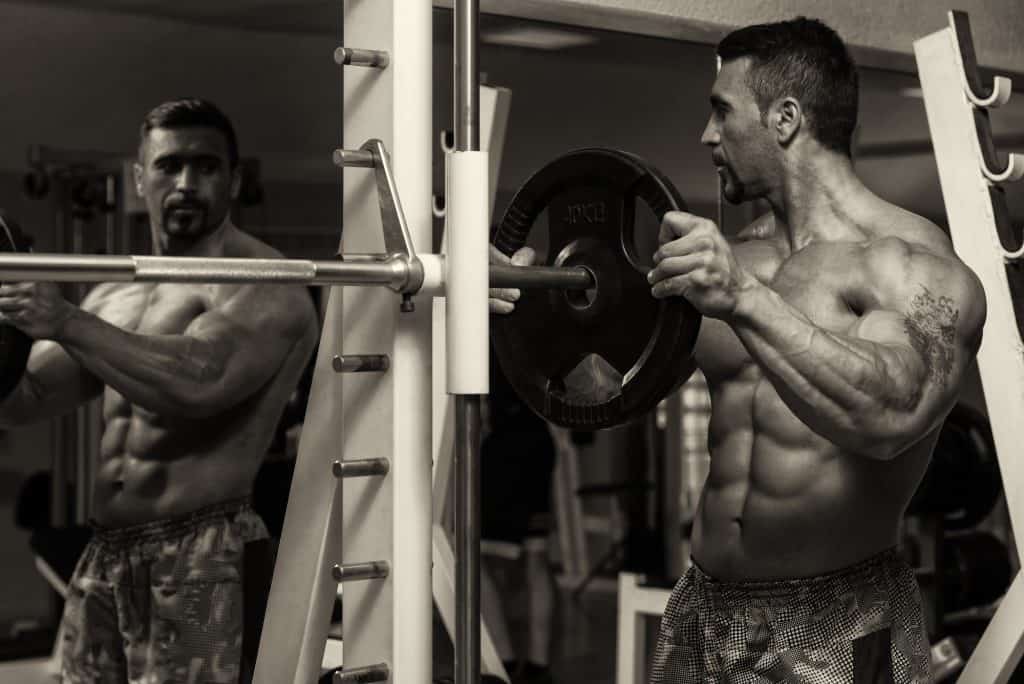
As mentioned, to build strength you need to complete resistance exercises. What type of resistance you use depends on numerous factors including your target, accessibility to equipment, time, and finances.
Let me show you how to gain strength through three different kinds of resistance.
Bodyweight
The easiest and most convenient type of workout. Using your own body’s mass for resistance is an ideal route into strength training for the absolute novice or when unable to hit the gym.
The benefits include:
- Can be completed anywhere: Whether at home, hotel, park, or even the office.
- Virtually cost-free: While some equipment may be beneficial (free-weights, training mat, exercise bands) they’re not essential.
- Provides a gentle entry into strength training for the beginner: Ensuring your muscles are beginning to grow at a steady pace and avoid injury.
- Improves flexibility and stability: Extremely important, as I’ll explain later.
- Resistance can be elevated by the use of weights (whether store-purchased or improvised).
However, while a good way to develop and/or maintain strength—these exercises will not lead to immense, jaw-dropping power.
Dumbbells
Probably the most versatile strength training aids. Even if you don’t have access to a gym, these powerhouses of resistance can be picked up relatively cheaply.
You don’t even have to have a rack of different weighted ‘bells in your home. Over recent years, adjustable dumbbells have hit the market. These allow you to switch between weights at the click of a button—and they take up very little room.
Dumbbells are an excellent way to increase resistance on bodyweight exercises or used on their own. They can be utilized to develop good lifting techniques before progressing onto the much heavier barbell.
Furthermore, they’re ideal “levelers”. If you’re new to strength training, you’ll have a dominant arm (one that is stronger than the other).
Being able to use individual dumbbells in each hand allows you to restore the balance. Whereas diving straight into barbell exercises can mean that one arm compensates for the other—leading to uneven strength gains on different sides of the body.
Barbells
The ultimate tool in serious power building. If you’re looking for absolute beast-like strength—you need to use a barbell in a gym.
A barbell enables you to consistently rack up the weight loading—much more than dumbbells alone can provide.
Due to the weight they carry, care has to be taken when in use. I always recommend a friend or buddy to “spot” you during your workouts, should you reach the point of fatigue and be unable to safely lower your weights.
One of the most efficient routine that involves training with barbells is the push, pull, and legs split.
How Often Should You Train for Strength?

Understanding how to gain strength isn’t just about knowing the correct exercises—their frequency is vitally important too.
At the very minimum, you should work out three times a week—building up to four or even five.
You’re probably too young to remember the 1977 bodybuilding movie Pumping Iron (if so, I recommend you get hold of it). In it, seven-time Mr. Olympia Arnold Schwarzenegger confesses that he failed to attend his father’s funeral. Since then, he couldn’t let his training slip.
Ok, I’m not recommending you follow this somewhat morally dubious dedication to training. But what is clear is that if you want the ultimate in returns—you have to commit.
That being said, don’t think a seven-day training program will yield the best strength results either.
You need to rest.
In 2014, experts from the University of Sao Paulo proved that excessive training with insufficient rest actually broke down muscles and reduced strength.
Strength builds through the process of—muscle damage through training—muscle rebuilds—muscle is stronger.
This regrowth occurs during rest periods. Training during this process can hamper strength gains.
Hence, during your days off don’t think you’re inhibiting your strength gains—you’re boosting them.
The Best Workouts to Gain Strength
Wondering how to gain strength quickly?
Start pushing your body with some intense workouts now!
Below, I’ve put together two of my favorite workouts for building strength—the first purely concentrates on body weight as resistance. The second includes gym equipment for the ultimate in power gains.
These are designed to be completed at least three times a week. As mentioned earlier, the rep count depends on your goals.
Low reps and high weight-loading means massive strength, lighter weights but more reps lead to tone, definition, and elevated power. Whatever your rep choice, remember to use a load that induces fatigue at the end of each set.
As your strength improves—increase the weight load.
Each workout should take between 45–60 minutes, including rest periods.
The Ultimate Bodyweight Workout for Strength
As these exercises don’t require weights—complete each set until fatigue sets in. After each exercise, rest for three minutes before commencing the next.
1
Plank

Main muscles worked:
Rectus abdominis (abs)
Additional muscles:
Erector spinae (back), deltoids, pectorals
Duration:
One minute
Number of sets:
Three
Rest time between sets:
One - Two minutes
One of the most powerful exercises for creating impressive core strength—surprisingly, it’s much tougher than it looks.
If one minute is too difficult—aim for as long as possible. It’s important that form isn’t at the expense of duration.
Always ensure your legs, buttocks, and back form one straight line. Performing in front of a mirror or having a friend observe can ensure good technique.
2
Push Ups
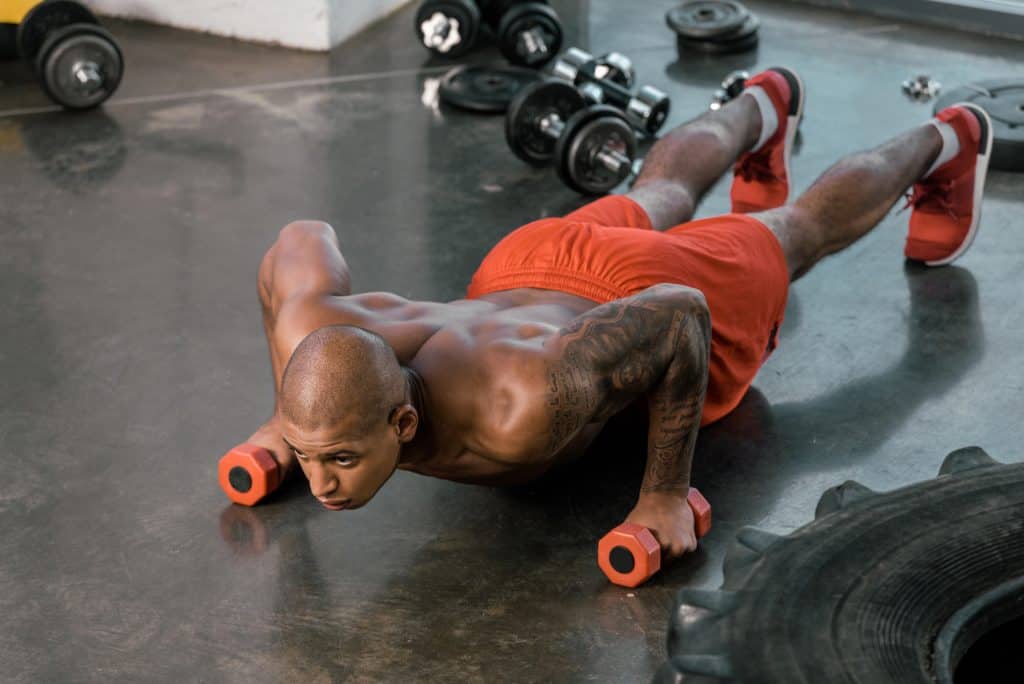
Main muscles worked:
Pectorals (Chest)
Additional muscles:
Deltoids, triceps, abdominals
Duration:
Until fatigue
Number of sets:
Three
Rest time between sets:
One - Two minutes
A favorite of PT instructors and militaries worldwide. An immense exercise that improves strength throughout the upper body.
For additional resistance, a weighted vest or loaded backpack can be used during this exercise. Try to ensure your hands are located beneath the shoulders—or move outwards for increased difficulty.
3
Squat
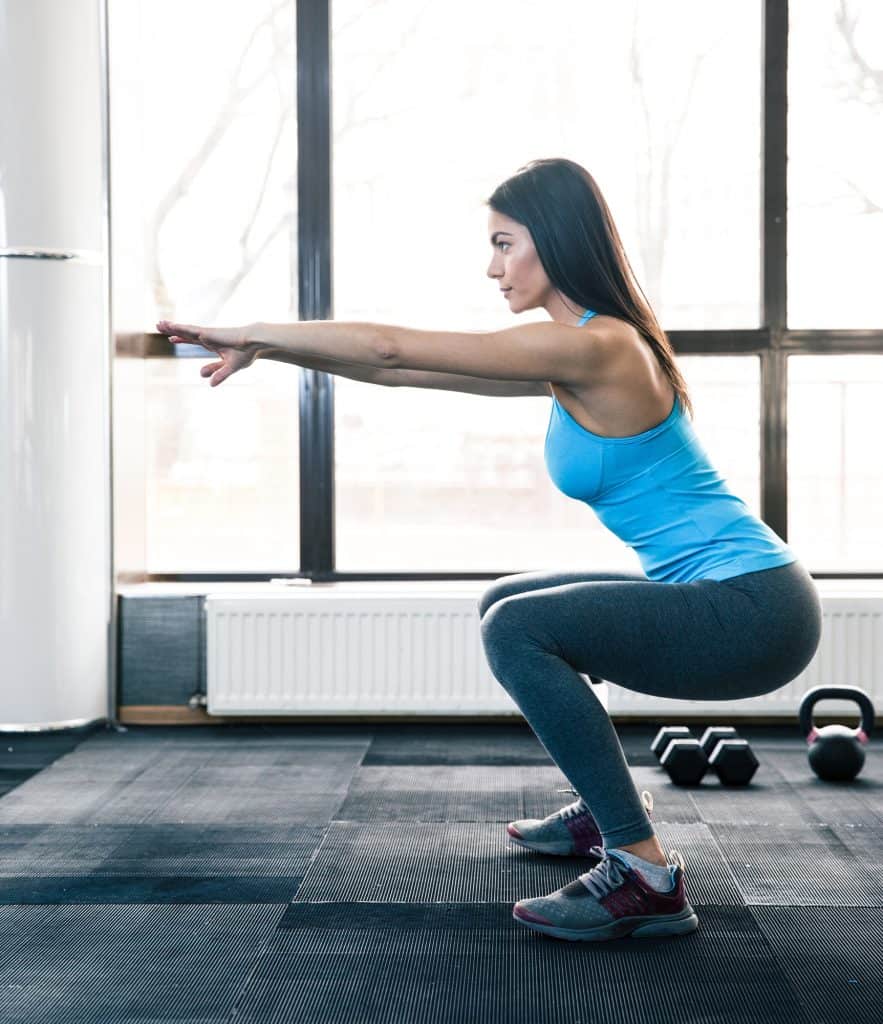
Main muscles worked:
Gluteus maximus and quadriceps
Additional muscles:
Erector spinae, gluteus medius, and minimus, transverse abdominis
Duration:
Until fatigue
Number of sets:
Three
Rest time between sets:
Two minutes
At the lowest point, go slightly past a sitting position by around a couple of inches—no more. Dropping right down to the ground can place excess stress on the knees. Hold that position for a couple of seconds or more. Do not underestimate the power of this exercise despite its simplicity. You will be surprised by additional strength you will feel in your hip flexors.
For elevated strength-boosting results—hold homemade weights (such as water bottles) in the hands. A powerful exercise also used in my gym workout—using a barbell.
4
Pull-Ups

Main muscles worked:
Latissimus dorsi (lats/back)
Additional muscles:
Biceps, triceps, shoulder extensors
Duration:
Until fatigue
Number of sets:
Three
Rest time between sets:
Two minutes
Pull-ups are another fundamental bodyweight move that tests your back overall strength.
Another variation of the pull-ups are the chin-ups.
The chin-up differs from the pull-up in that the hands point towards the body—placing extra strength demands on the back.
A narrow grip focuses more heavily on the shoulder muscles. This exercise does require a pull-up bar.
5
Dips

Main muscles worked:
Triceps
Additional muscles:
Chest, Shoulder extensors, abdominals
Duration:
Until fatigue
Number of sets:
Three
Rest time between sets:
Two minutes
Even if you don’t have a workout bench at home, this exercise can be performed on the stairs or a low table.
The Ultimate Equipment Workout for Strength
1
Barbell Squat

Main muscles worked:
Gluteus maximus and quadriceps
Additional muscles:
Erector spinae, gluteus medius, and minimus, transverse abdominis
Number of reps:
Six for ultimate strength, 12 for functional strength
Number of sets:
Three
Rest time between sets:
Two and a half minutes
Ensure your knees align with your out-turned feet throughout this exercise to prevent compensation by other muscles.
2
Bench Press

Main muscles worked:
Pectorals (Chest)
Additional muscles:
Deltoids, triceps, and rotator cuff
Number of reps:
Five for ultimate strength, 12 for functional strength
Number of sets:
Three
Rest time between sets:
Two and a half minutes
Always use a spotter during this exercise for safety purposes, especially if the weight is heavy. The ideal technique involves keeping the barbell directly above the middle chest—not moving towards the head or navel.
3
Military Press
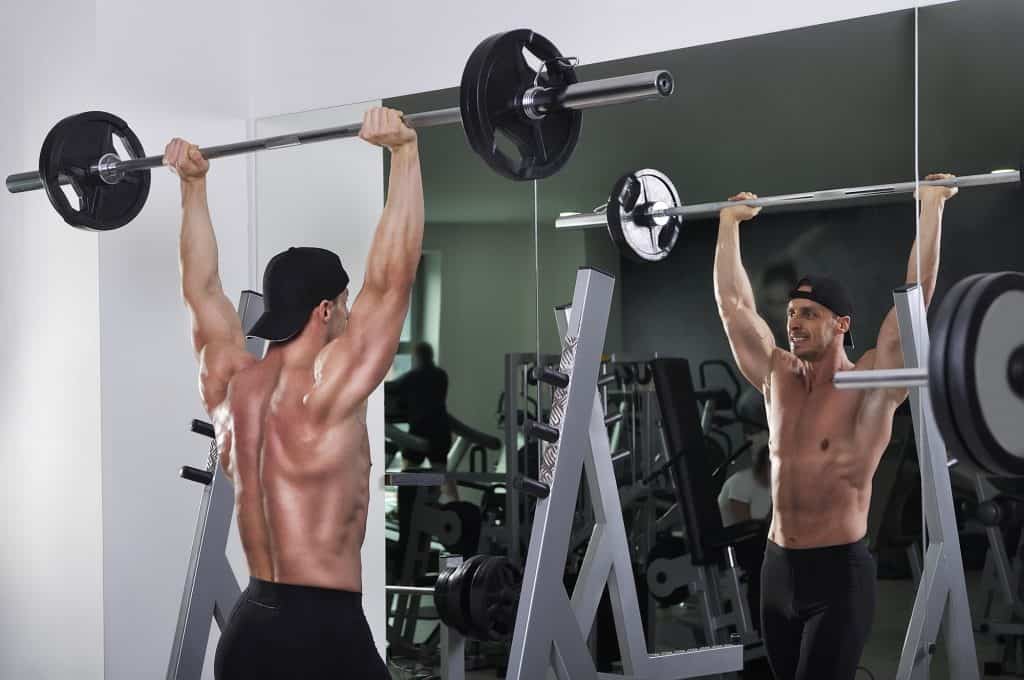
Main muscles worked:
Deltoids
Additional muscles:
triceps, transverse abdominis, and rotator cuff
Number of reps:
Five for ultimate strength, 12 for functional strength
Number of sets:
Three
Rest time between sets:
Two and a half minutes
Lower the barbell to your chin level then press upward. When Pressing move the bar straight over your head, not to the front or back.
4
Deadlift

Main muscles worked:
Erector spinae (lower back), hamstrings, gluteus maximus.
Additional muscles:
Finger flexors, quadriceps
Number of reps:
Five for ultimate strength, 12 for functional strength
Number of sets:
Three
Rest time between sets:
Two and a half minutes
For maximum strength gains, use an alternated grip (one palm facing inwards and one outwards).
You can also add a variation to the traditional deadlift by using a narrow grip and a wider feet position. This is called the sumo deadlift and is performed in the below video.
5
Bent-Over Barbell Rows

Main muscles worked:
Latissimus dorsi (lats/back)
Additional muscles:
Deltoids, rhomboids, rotator cuff
Number of reps:
Five for ultimate strength, 12 for functional strength
Number of sets:
Three
Rest time between sets:
Two and a half minutes
While a powerful stability exercise—this does exert a lot of pressure on the lower and middle back. Hence if you suffer from any previous spinal issues—it’s not recommended. Instead, complete a low-pulley row (machine cable rows).
The 3 Secrets to Gain Strength
You’ll often read that strength is the foundation on which everything else is built.
The theory is as follows:
- Strength allows you to lift more which leads to
- Muscle gain which promotes the basis of
- Explosive power to allow you to improve your
- Speed, agility, and quickness which results in
- Specific benefits such as the ability to throw a football.
However, it’s not quite that simple.
In fact, there are three precursors to strength itself—flexibility, mobility, and stability.
Ensuring that you develop these three key areas in your training vastly increases your ability to gain strength.
Here is a brief description of flexibility, mobility, and stability, and how to gain strength by developing each one of them.
There are many powerful versions of these training-enhancing exercises, below, but I included my personal favorites.
1
Flexibility
The total range of motion in a joint, or indeed a group of joints. And, in addition, the muscle which spans those joints.
Flexibility—The Hamstring Stretch
- Sit on the floor—your left leg extended straight in front of you.
- Position the sole of the right foot against your inner left thigh.
- Lean forward with both hands to grasp your left foot.
- Hold for around 20 seconds feeling the work on the hamstring.
- Repeat on the opposite side.
- Do 10 repetitions.
2
Mobility
Although sounding similar to flexibility, mobility is different. This refers to the amount a joint can move where two bones come together (articulation)—before its range of motion is restricted by muscles or tissues.
Mobility—The Squat to Stand
- Stand with your feet slightly wider than shoulder-width apart.
- Keeping the legs perfectly straight, bend forward at your hips and grasp your toes.
- Squat as low to the floor as you can by bending at the knees.
- While still holding the toes, straighten your legs again.
- Complete 12 repetitions.
3
Stability
While both mobility and flexibility are concerned with movement—stability is all about control.
It’s the ability to coordinate the motion of joints, muscles, and tissues to ensure that any movement is safe, steady, and intentional.
Stability—The Swiss Ball Push Up
- Begin in a kneeling position on the floor—an exercise ball (Swiss ball) directly in front of you.
- Lay your palms on the top of the ball, around 7 inches on either side of the center. Lockout arms fully.
- Extend your legs fully behind you—the feet should be wider than shoulder-width apart.
- Lockout the legs completely—making a perfectly straight line of legs, buttocks, and back.
- The only points of contact are toes on the floor and hands on the ball.
- Lower the chest towards the ball by bending at the elbows—stop when they reach 90 degrees.
- Hold this position for one second.
- Push the chest back upwards again—powering through the arms.
- Complete two sets of 10 repetitions.
Here is a video from Jeff Cavaliere that will help you visualize these core components.
The key:
Developing these three areas means that your strength workouts are vastly enhanced—delivering the benefits of:
- Targeting the correct muscles in the relative exercise: Bad technique can lead to compensation by other parts of the body.
- Reducing the chance of injury: Working on flexibility, mobility, and stability ensures workouts are completed safely.
- Promotes proper technique: Ensuring you reap the full rewards of the exercise.
My advice is to complete exercises that work on these three areas on one of your non-workout days.
Eating for Strength

If you ask the average guy or girl on the street how to gain strength—chances are their first answer will be exercise.
However, you can’t exercise or build strength without concentrating on another essential area—nutrition.
More specifically, for the ultimate in strength gains, you need to work hard on the macronutrients (or macros)—protein, carbohydrates, and fat.
These macros are essential for power gains in that:
- Carbohydrates: The body’s “go-to” source for energy—insufficient carbs means lackluster or curtailed workouts.
- Fats: Like carbs can provide fuel for workouts, while additionally promoting a calorie surplus essential for boosting strength and muscle.
- Proteins: The building blocks of muscle—insufficient protein prevents strength increases however hard you train.
How much of each of these macros you require depends on your targets. For immense strength and muscle gains your daily food intake should include around 30 percent protein, 55 percent carbs, and 15 percent fats.
For tone, impressive definition, and elevated strength—look to include 25 percent protein, 50 percent carbohydrates and 25 percent fats.
Remember—this nutritional plan is alongside regular training—food alone will not build strength.
One further point:
It’s important that you consume sufficient calories to build muscle and strength, but not so much that it promotes fat gain.
There’s no “ideal” answer to how much you should consume. This depends on how often you are training, your gender, and height, etc. So, here’s a handy calculator to help you decide how many calories to ingest per day.
Here are my five favorite strength boosting foods:
- Eggs: High in protein, healthy fat, and micronutrients such as vitamin B.
- Chicken breast: Low in fat (when skinned), yet packed full of protein.
- Salmon: Contains omega 3 acids known to promote muscle and strength gains.
- Greek yogurt: Includes whey protein (fast-digesting) and casein protein (slow-digesting) which research indicates builds strength and mass when consumed together.
- Beef: Not only a great source of protein, but it also includes creatine—a compound shown in studies to elevate strength.
The Best Supplements for Gaining Strength
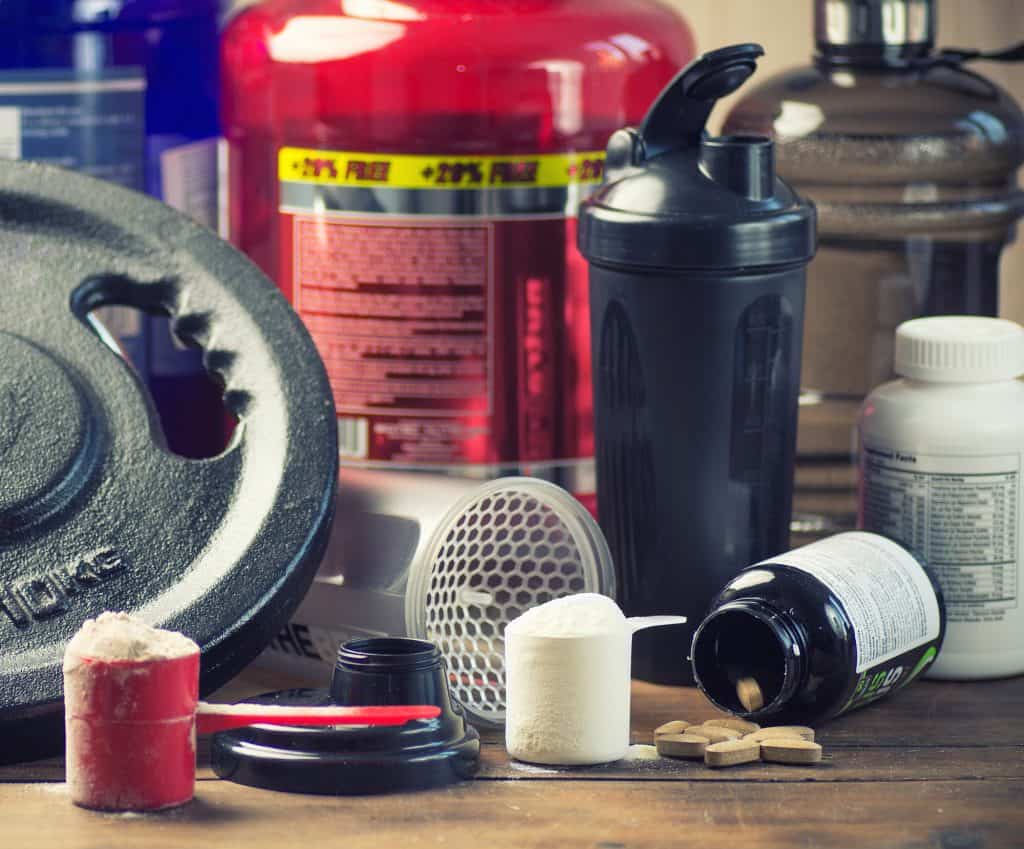
Elevating strength can be boosted by using legal and natural supplementation. When taken in conjunction with a power-boosting workout and alongside a macro-rich diet—they can vastly increase returns.
If you were to ask me how to gain strength through supplements—I’d recommended the following products:
- Whey protein: A powerful source of muscle-building fuel—easier than consuming large amounts of meat.
- Beta-alanine: An amino acid that increases endurance allowing you to push your body harder.
- Creatine: A compound which research indicates boosts strength and elevate stamina.
- Branched-chain amino acids (BCAAs): Kick-start the muscle and strength building process.
- Betaine—sourced from beets: This compound is a proven power and strength booster.
The Takeaway
Gaining strength can improve our daily life, enhance our appearance, and provide immense confidence—and, with a little dedication, it’s not difficult.
Follow the six-step plan of:
- Determining your goals.
- Following a workout that meets your needs.
- Working on your flexibility, mobility, and stability.
- Watching your macro intake.
- Supplementing with proven strength enhancers.
- Sticking to all the above.
In just a few short weeks of following this plan—your strength will escalate rapidly. The sooner you start—the sooner the returns!





